Division of a Line Segment into a Given Ratio
Vijay’s class teacher told him to mark two points A and B on a line segment PQ of length 10
cm such that  and
and  . He does not know how to construct it. Can we help him? Now let us try to mark a point B in the same way.
. He does not know how to construct it. Can we help him? Now let us try to mark a point B in the same way.
It is given that .
Let us take PB = x and BQ = 2x. It is also given that PQ = 10 cm.
But, PQ = PB + BQ
10 cm = x + 2x 3x = 10 cm
x = cm
cm
Now, it is difficult to mark a point B on the line segment PQ, since the value of x is in decimal form and even non-terminating.
We can observe that the marking of point A was only possible due to two factors.
1.We were able to measure the length of AQ and PA.
2. The length of the line PQ was divisible by the sum of the numerator and denominator in the ratio 3:2 i.e., the sum of numerator and denominator is 3 + 2 = 5. The length of PQ i.e., 10 cm was divisible by 5.
But in the second example, length of PQ is not divisible by the sum of the denominator and numerator of the given ratio. In order to carry out such constructions, we follow two methods. Let us learn each of these methods with the help of examples.
Let us suppose that we have to divide a line segment of 8.8 cm in the ratio 4:7.
Let us discuss one more example to understand the concept better.
Example: Draw a line segment of length 6.2 cm and divide it in the ratio 5:3.
Solution:
To divide a line segment of length 6.2 cm in the ratio 5:3, we follow the below given steps.
1. We draw a line segment PQ of length 6.2 cm.
2. Now, we draw a ray PX making an acute angle with PQ and draw a ray QY parallel to PX by making ∠PQY equal to ∠QPX.
3. We locate 5 points P1, P2, P3, P4, and P5 on PX and 3 points Q1, Q2, and Q3 on QY such that PP1 = P1P2 = P2P3 = P3P4 = P4P5 = QQ1 = Q1Q2 = Q2Q3.
4. Now, we join P5Q3 which intersects PQ at R.
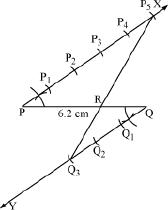
Now, R is the point on PQ which divides the line segment PQ in the ratio 5:3.
Construction Of A Triangle Similar To The Given Triangle
Consider the following triangle ABC.
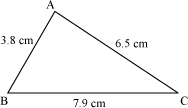
In the above figure, the measures of the sides AB, BC, and CA are given as 3.8 cm, 7.9 cm, and 6.5 cm respectively.
Can we construct a triangle similar to ΔABC and whose sides are of the sides of ΔABC?
of the sides of ΔABC?
Example 1: Construct a triangle similar to the following triangle with sides  of the sides of the given triangle.
of the sides of the given triangle.
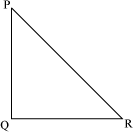
Solution:
Firstly, we draw a ray QX making an acute angle with QR on the side opposite to vertex P and mark 5 points (corresponding to the greater of 2 or 5) X1, X2, X3, X4, and X5 on QX such that QX1 = X1X2 = X2X3 = X3X4 = X4X5.
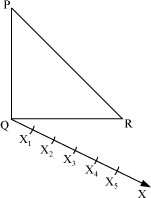
Now, we join X2R (corresponding to the denominator of the given ratio) and draw a line passing through X5 (corresponding to the numerator of the given ratio) and parallel to X2R. Let this line intersect the extended line QR at point R′. Now, we draw a line passing through R′ and parallel to RP, which intersects the extended line PQ at point P′.
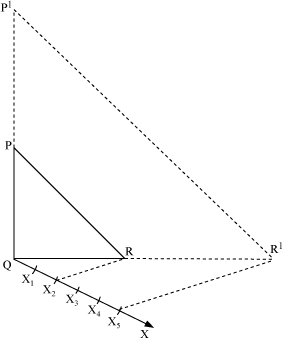
Thus, P′QR′ is the required triangle which is similar to the given triangle and with sides  of the sides of the given triangle.
of the sides of the given triangle.

 ACERISE INDIA
ACERISE INDIA
